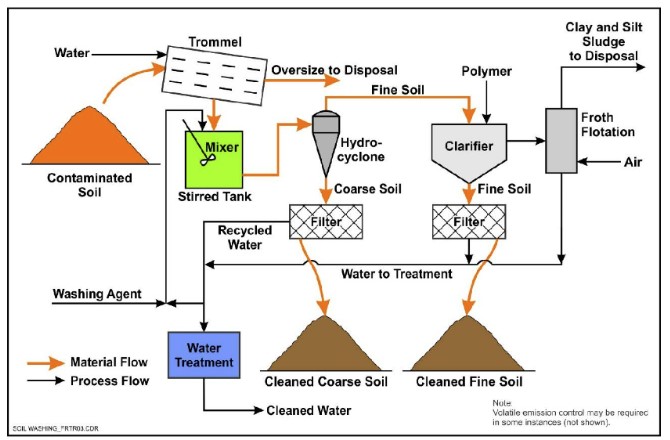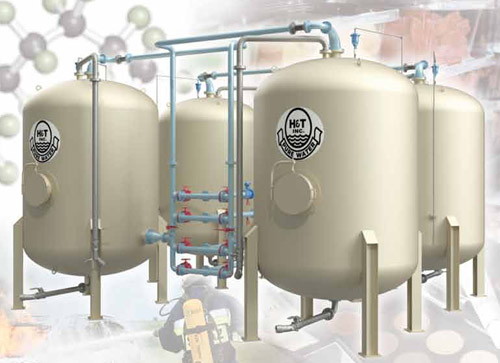PFAS Treatment in Surface Water
Your Overview to PFAS Therapy Technologies and Advantages
The frequency of PFAS contamination in water sources requires a comprehensive understanding of offered therapy modern technologies. Numerous methods, such as turned on carbon filtration, ion exchange systems, and advanced oxidation processes, present distinct advantages in resolving these relentless pollutants. Each technology not just targets details PFAS substances however also plays a vital function in enhancing total water quality and securing ecological stability. As areas come to grips with the effects of PFAS exposure, the choice of a suitable therapy technique comes to be progressively essential, motivating a closer assessment of these modern technologies and their respective advantages.
Recognizing PFAS Contamination
Understanding PFAS contamination is important for resolving its prevalent influence on ecological and human health (m270 pfas treatment). Per- and polyfluoroalkyl substances (PFAS) are a team of synthetic chemicals extensively used in different commercial and consumer items because of their water- and grease-resistant properties. Frequently located in firefighting foams, non-stick pots and pans, and water-repellent materials, PFAS have entered the environment with manufacturing processes, wastewater discharges, and leaching from garbage dumps
Once released, these substances linger in the environment, leading to extensive contamination of dirt and water resources. Their unique chemical structure, characterized by strong carbon-fluorine bonds, provides them immune to degradation, resulting in a sensation called "forever chemicals." PFAS can build up in the human body and the food chain, potentially triggering unfavorable health impacts, consisting of immune system interruption, developmental concerns, and an increased threat of specific cancers.
Governing firms and health organizations are increasingly recognizing the significance of PFAS contamination, triggering efforts to keep track of, assess, and minimize its impacts. Recognizing the paths of PFAS contamination is crucial for educating public law and establishing efficient strategies to secure both environmental and human wellness.
Introduction of Therapy Technologies
Different treatment technologies have been developed to deal with the obstacles positioned by PFAS contamination in water and soil. These modern technologies can be extensively identified into numerous groups, each with its one-of-a-kind mechanisms and effectiveness in getting rid of PFAS compounds.
One prominent method is ion exchange, which utilizes material materials to capture and remove PFAS from contaminated water. Another innovation, progressed oxidation processes (AOPs), utilizes strong oxidants and ultraviolet light to break down PFAS right into less harmful substances.

Activated Carbon Filtration
Turned on carbon filtration is a widely utilized method for the elimination of PFAS from polluted water, known for its ability to adsorb a broad series of natural substances. This modern technology uses activated carbon, a highly porous product with a considerable surface area, which facilitates the binding of PFAS particles via physical adsorption. The effectiveness of activated carbon in Visit Your URL getting rid of PFAS is affected by numerous factors, consisting of the kind of carbon used, the get in touch with time, and the concentration of PFAS in the water.
Among the advantages of triggered carbon filtration is its flexibility; it can be carried out in different arrangements, such as granular turned on carbon (GAC) systems or powdered triggered carbon (SPECIAL-INTEREST GROUP) systems. GAC systems are generally used in larger-scale applications, while special-interest group can be made use of in smaller or temporary configurations. The modern technology is relatively simple to operate and keep, making it available for several water therapy centers.

Ion Exchange Solution
Ion exchange systems stand for one more efficient technique for the elimination of PFAS from contaminated water, complementing methods like activated carbon filtering. These systems operate the principle of exchanging ions in the water with ions held on a resin product. Ion exchange materials can be particularly created to target the adversely charged PFAS substances, efficiently capturing them and allowing cleaner water to go through.
One of the key advantages of ion exchange systems is their ability to get rid of a vast variety of PFAS, consisting of both long-chain and short-chain variants. This convenience makes them suitable for numerous applications, ranging from municipal water treatment to industrial procedures. Additionally, ion exchange systems can often accomplish reduced discovery limits for PFAS compared to some other treatment techniques, hence boosting water top quality.
Nevertheless, it is vital to check and take care of the regeneration of ion exchange media, as the efficiency can decrease gradually because of saturation. Correct maintenance and substitute of the material are vital for maintaining the system's performance. On the whole, ion exchange systems supply a reputable and efficient remedy for PFAS removal, adding dramatically to secure drinking water criteria and environmental management.
Advanced Oxidation Processes
Advanced Oxidation Processes (AOPs) make use of effective oxidants to effectively degrade PFAS substances in infected water. These ingenious treatment approaches generate highly reactive varieties, such as hydroxyl radicals, that can break down complicated PFAS particles right into less harmful by-products. m270 pfas treatment. AOPs usually employ mixes of ultraviolet (UV) light, ozone, hydrogen peroxide, or Fenton's reagent, enhancing the oxidation capacity and boosting degradation effectiveness
The main advantage of AOPs depends on their capacity to target a broad range of PFAS compounds, including both long-chain and short-chain versions. This adaptability see here is important, as PFAS contamination commonly involves combinations of different compounds with varying chemical frameworks. AOPs can be integrated right into existing water treatment systems, making them a functional solution for several towns and markets.
However, the application of AOPs can be resource-intensive, calling for mindful consideration of functional expenses and power consumption. In addition, while AOPs are effective in breaking down PFAS, they may not completely remove all by-products, requiring more treatment steps - m270 pfas treatment. On the whole, AOPs stand for an encouraging opportunity for addressing PFAS contamination, adding to cleaner water sources and improved public wellness defense

Conclusion
To conclude, attending to PFAS contamination requires a thorough understanding of readily available treatment modern technologies. Triggered carbon filtering, ion exchange systems, and progressed oxidation processes each present distinct benefits for efficiently eliminating these unsafe substances from water sources. By picking the appropriate modern technology, communities can boost water high quality, protect public wellness, and mitigate the ecological dangers connected with PFAS direct exposure. Proceeded research study and application of these approaches are vital for reliable monitoring of PFAS contamination in influenced areas.